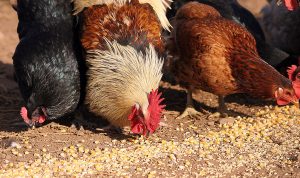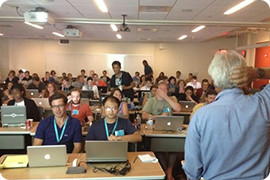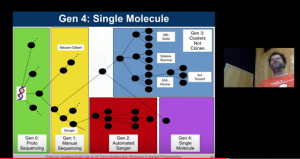So we recently had two problems with a common solution: #1, we hadn’t had a lab social function in awhile #2, we wanted to try using the MinION sequencer in a “field” setting, but weren’t quite ready to try it without electricity on hand. The obvious solution, have the entire lab over to my house …
The Marine Biological Laboratory in Woods Hole. MA will be offering their “STAMPS”: (Strategies & Techniques for Analyzing Microbial Population Structures) Course this August (8/3-8/13). Course Dates: August 3 — August 13, 2016 Deadline: April 8, 2016 | Apply here Course Website Course Schedule Directors: Mitchell L. Sogin, MBL and David B. Mark Welch, MBL …
I made a Storify summary of the Tweets from a workshop at the Pacific Symposium on Biocomputing that I attended on Tuesday on Computational Microbiology (with a big focus on microbiomes). [<a href="//storify.com/phylogenomics/psb16-session-on-microbiomes” target=”_blank”>View the story “#PSB16 session on computational microbiome #microbiomes ” on Storify]
Every year for the last few years I have given a talk on the “Evolution of DNA Sequencing” at the “Workshop in Applied Phylogenetics” at Bodega Bay Marine Lab. I just did the talk and thought I would post the slides here. I note – I also added an evolutionary tree of sequencing methods which …
I thought this might be of interest to some of the “microbiology of the Built Environment” crowd. I gave a talk at the UC Davis Bodega Bay Marine Lab as part of the Workshop on Applied Phylogenetics on the “Evolution of DNA Sequencing”. I posted the slides to Slideshare and am embedding them here. I …
DNA sequencing technology, a key tool in characterizing microbes in the environment, just keeps getting cheaper and easier. Right now there are some really nice technologies out there in machines from Illumina/Solexa, Roche/454 and ABI. And coming on the horizon are some new systems that possibly will be either “better” in some way or allow …


